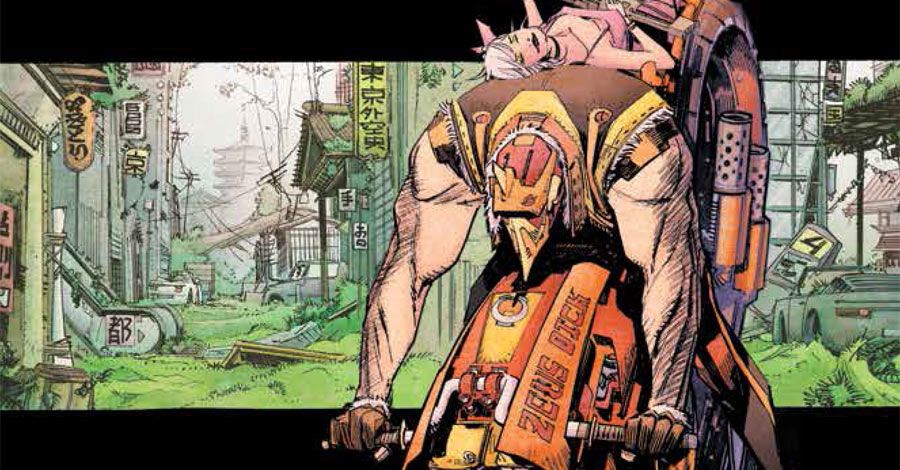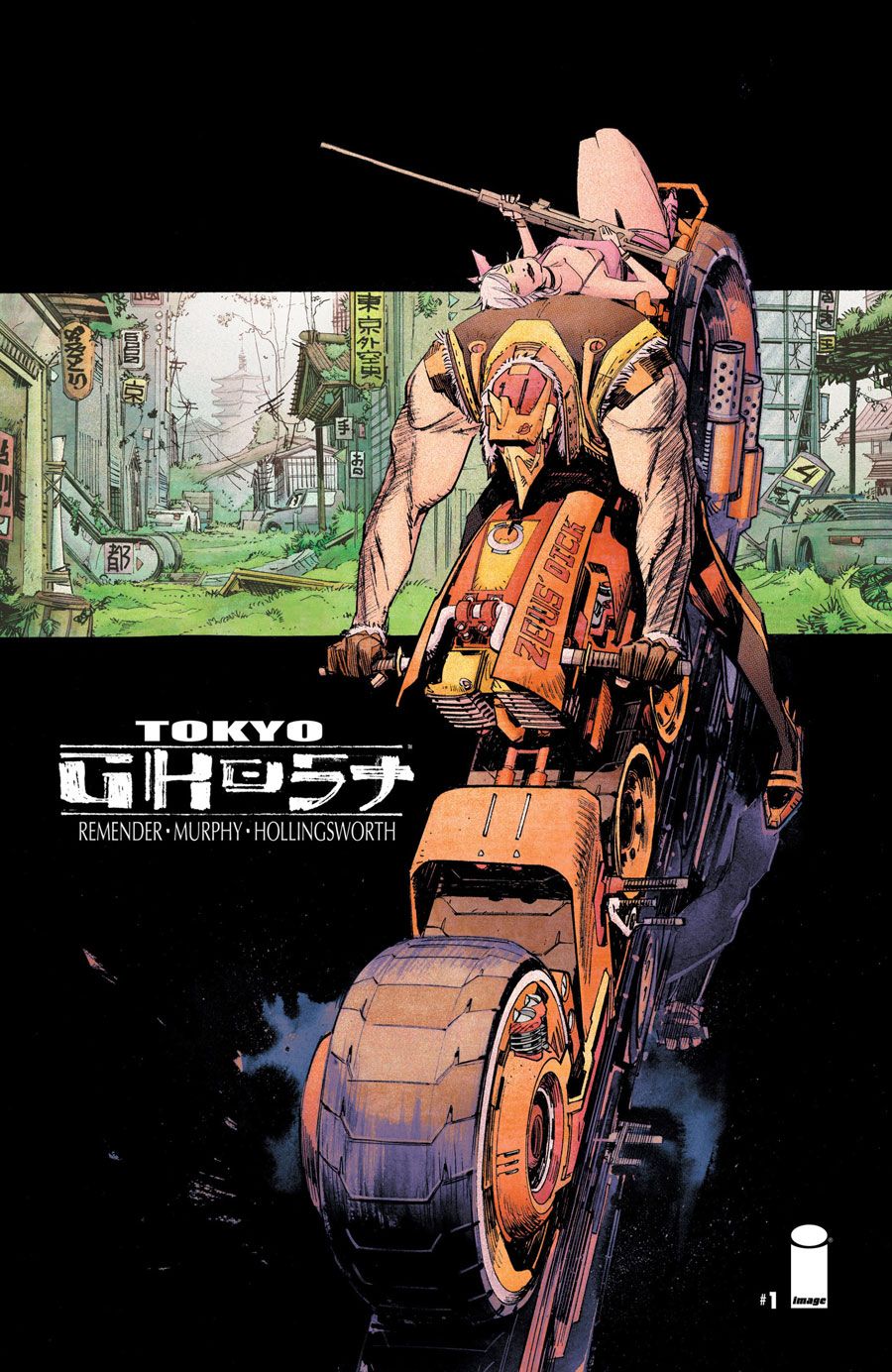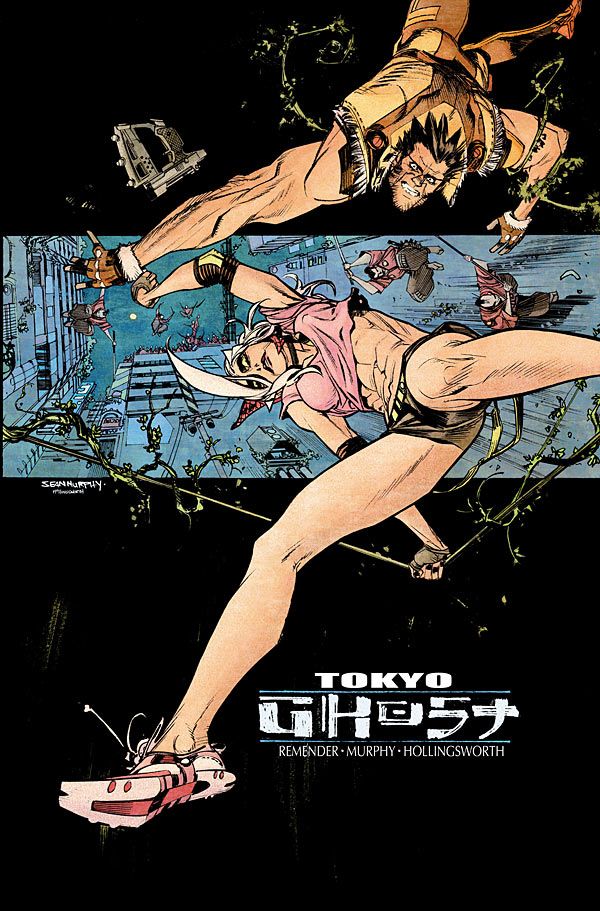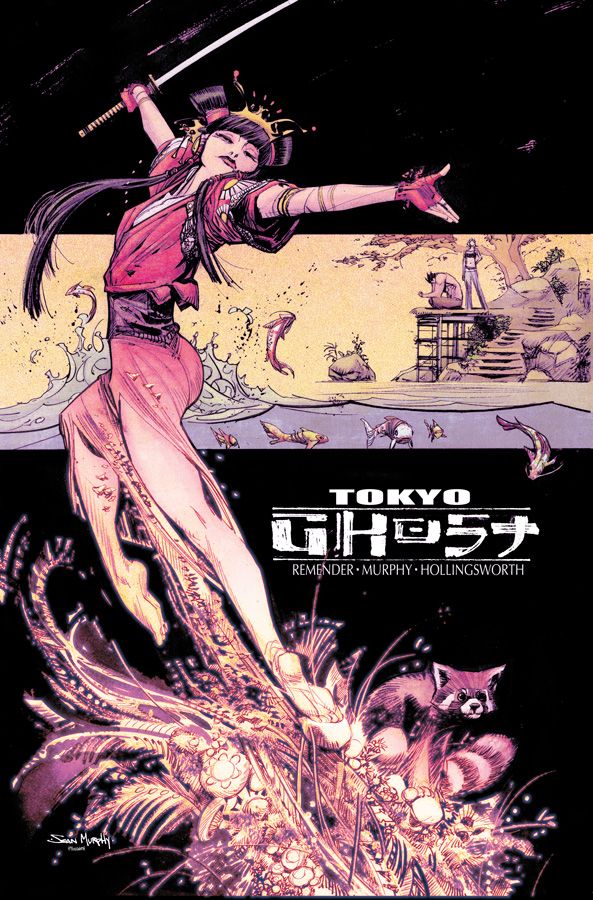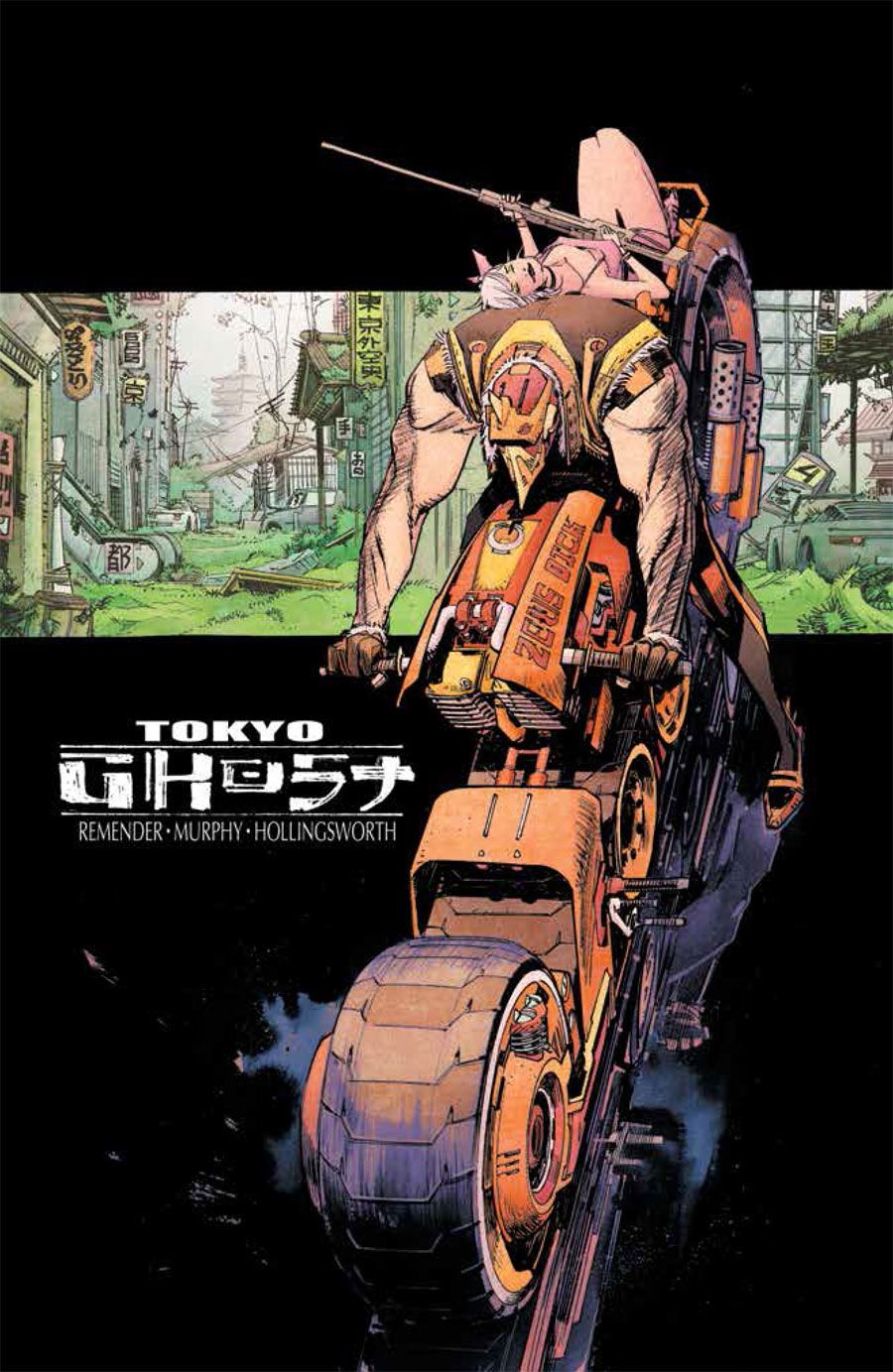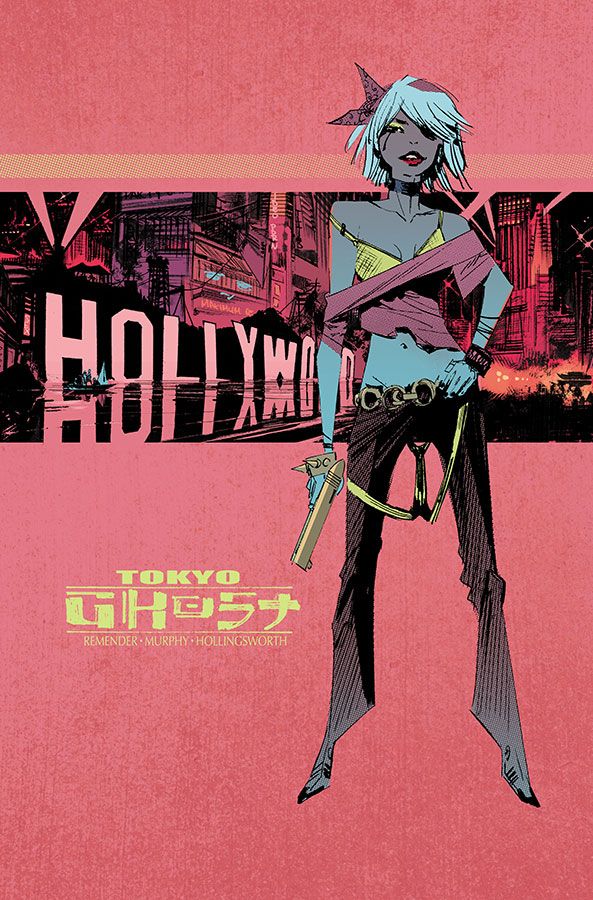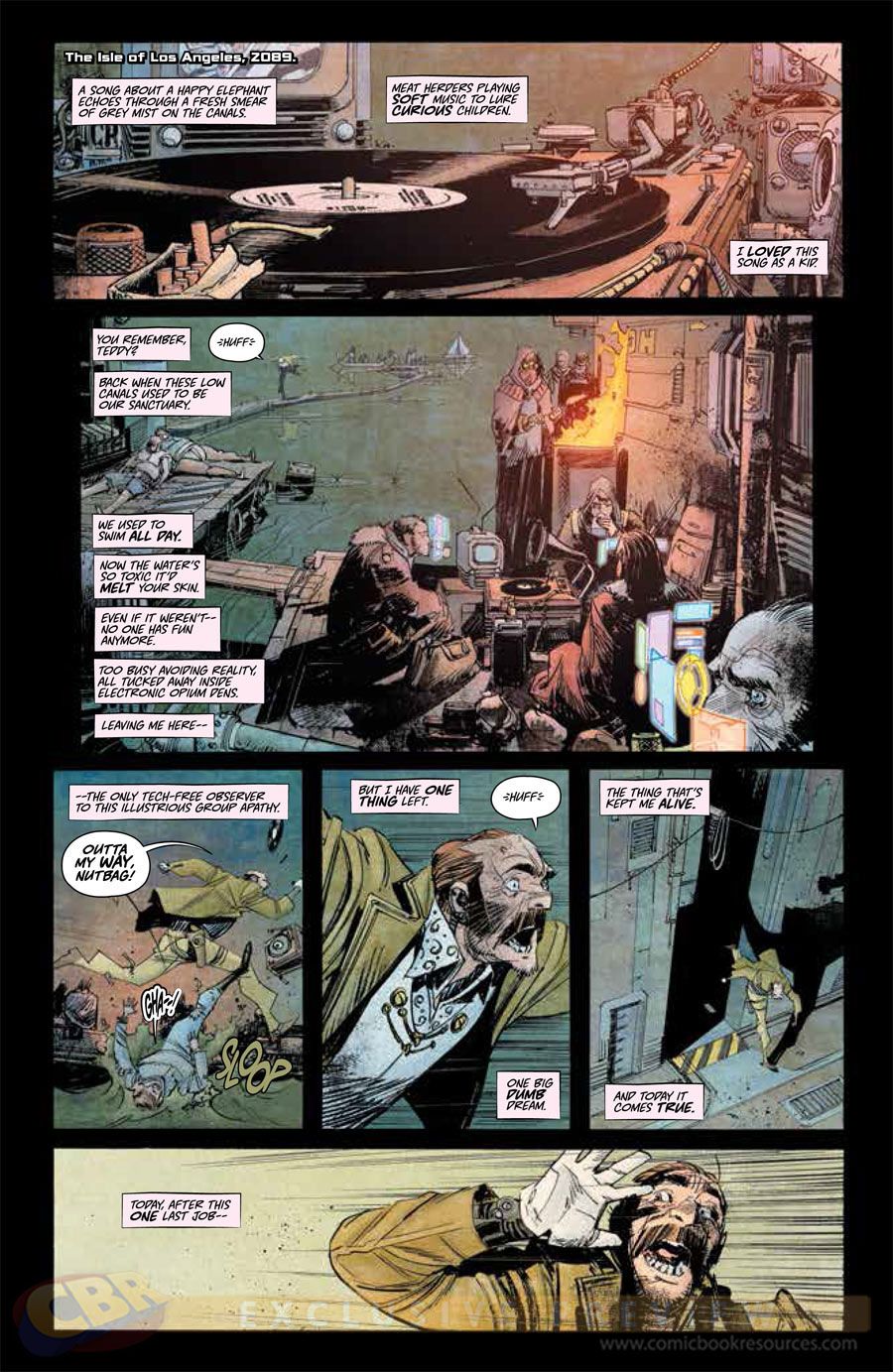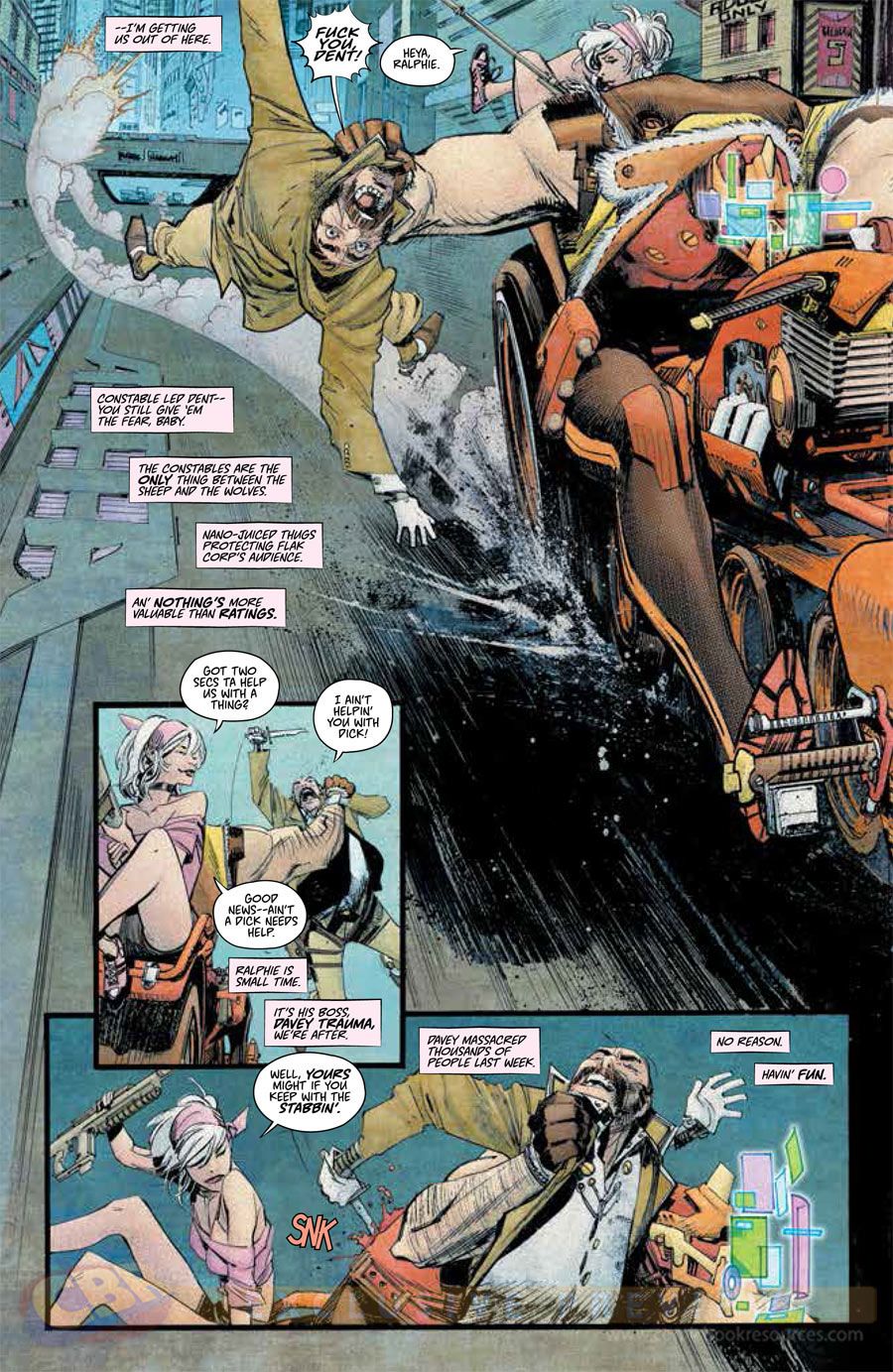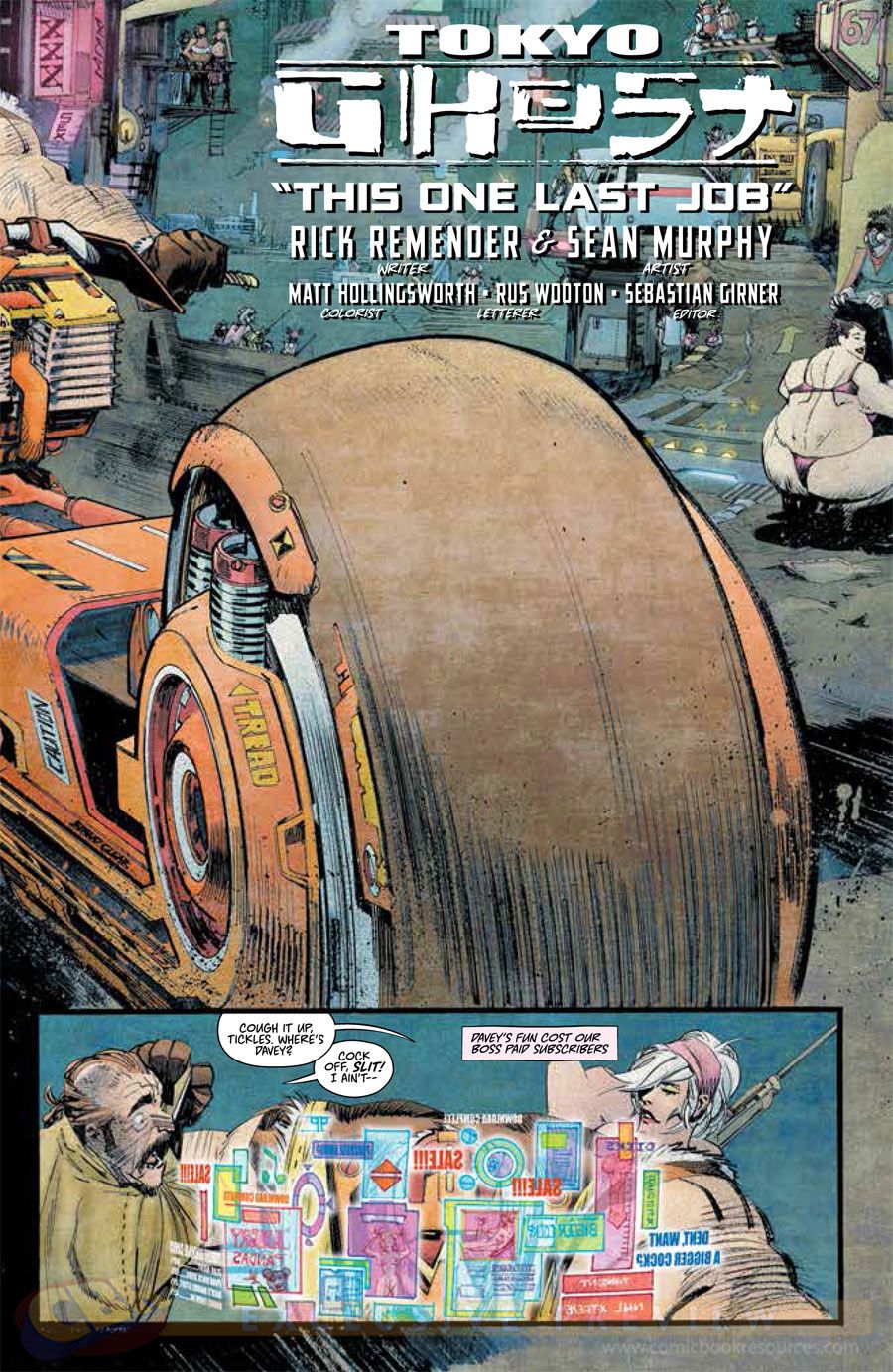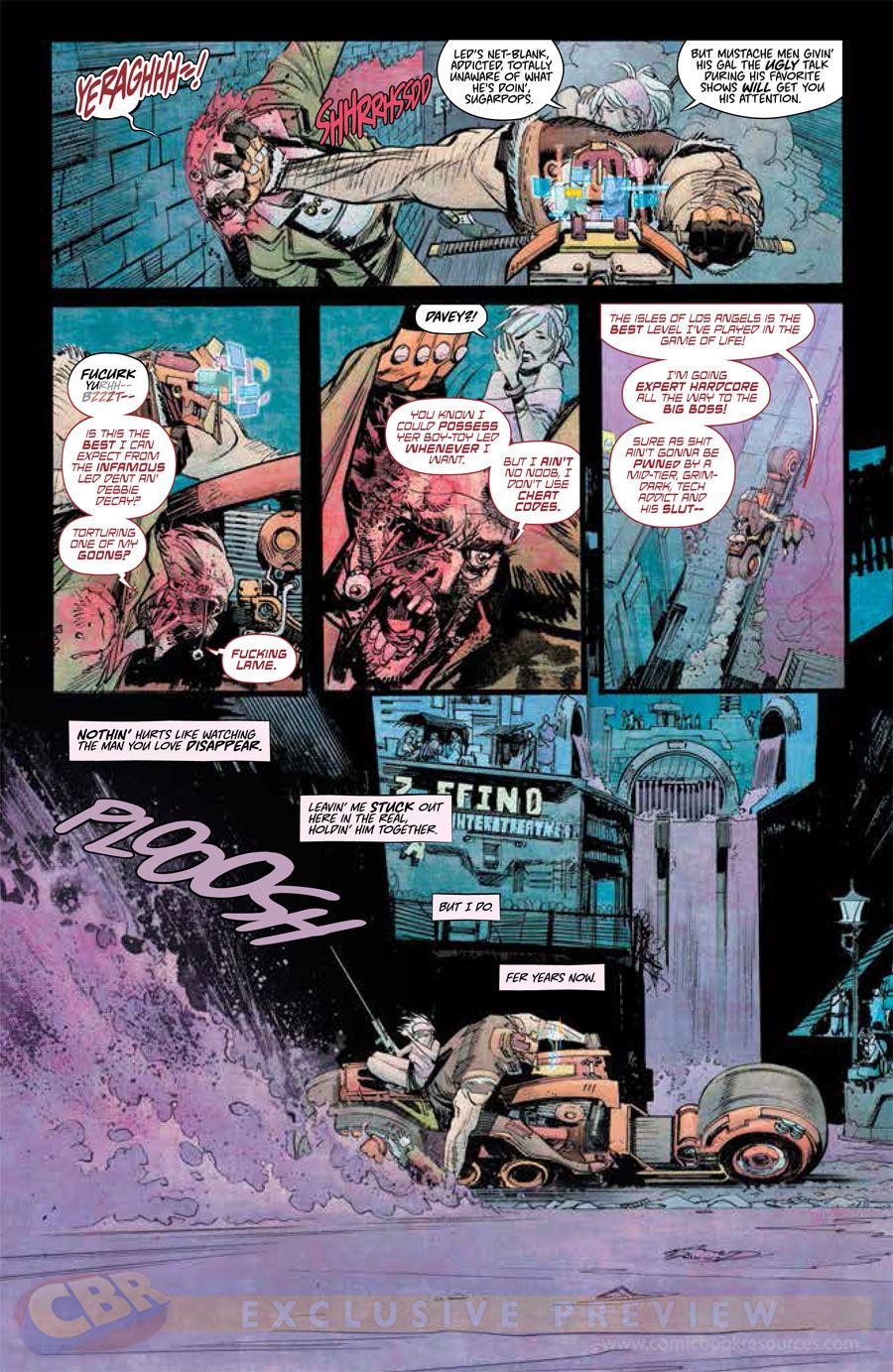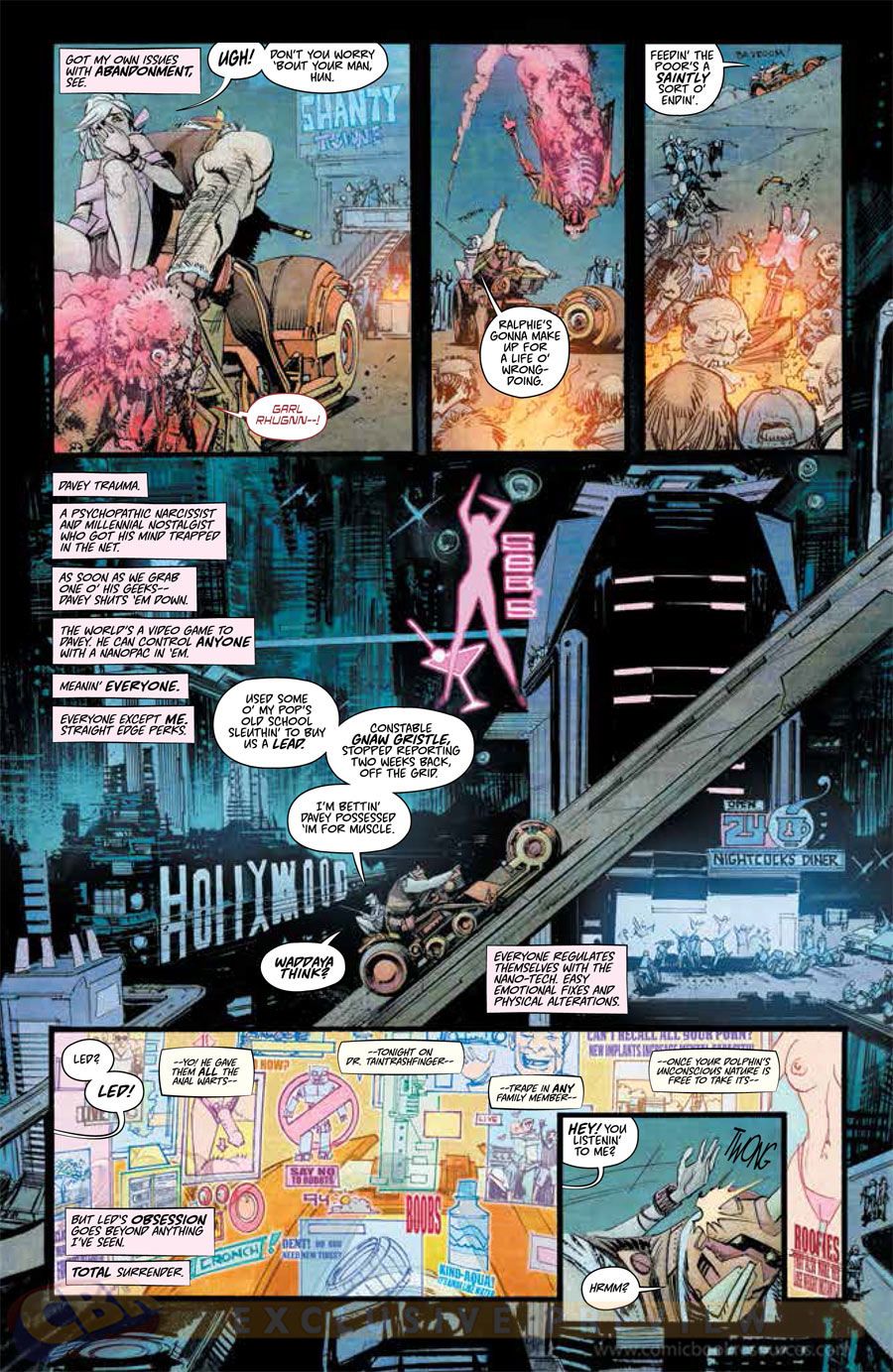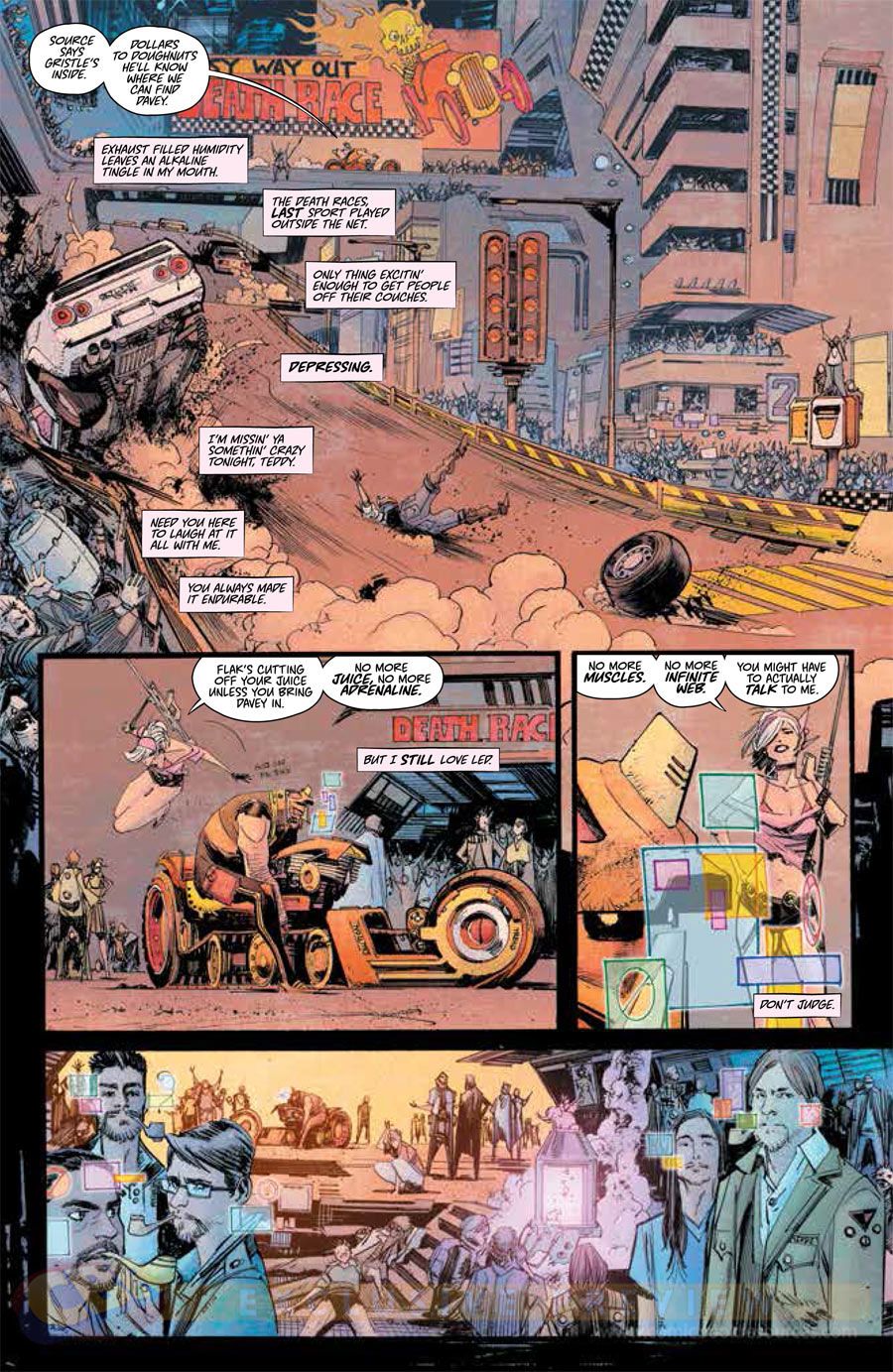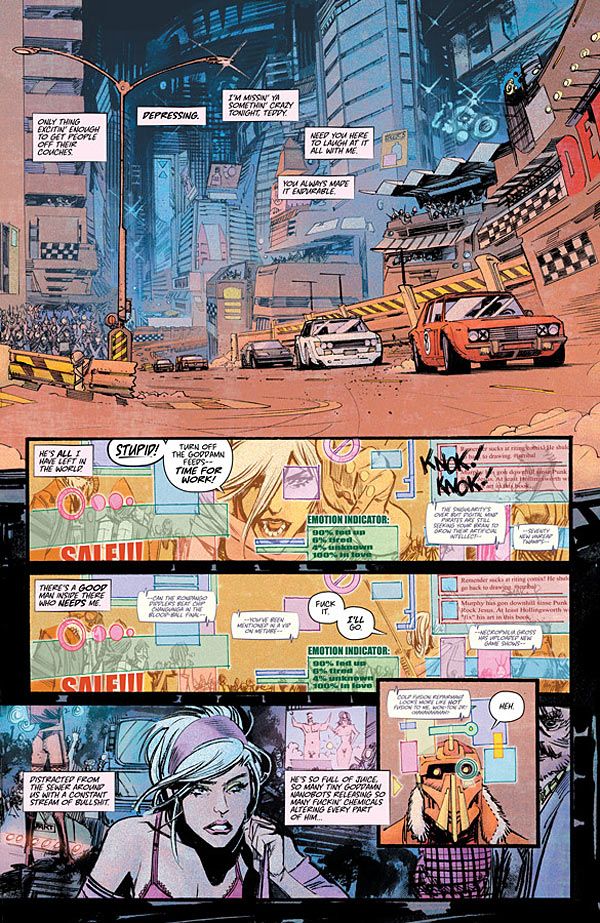This September, Rick Remender, artist Sean Murphy and colorist Matt Hollingsworth launch "Tokyo Ghost," transporting readers to a tech-addicted dystopia. The Image Comics title is series of contrasts that homage the creators' favorite bleak visions of the future from comics and movies, melding sci-fi tropes with things like samurai stories and real world technology.
Yesterday, Remender spoke openly with CBR News about his current focus on creator-owned work, discussing his luck at being afforded to play in the Marvel Comics toy box for nearly a decade, explaining why he made the call to return to his creative roots, and how he and Murphy found inspiration in modern life for their futuristic adventure.
RELATED: Rick Remender Explains Shift to Creator-Owned Comics, Plans for the Future
Now, in a wide-ranging discussion about the upcoming title, Remender discusses our own society's tech addiction that inspired "Tokyo Ghost," the Judge Dredd homaging constables that serve as the series' protagonists and the initial criminal they're pursuing, and some of the ways in which arriving in the titular tech free city will impact the characters and the story he, Murphy and Hollingsworth are telling.
CBR News: In the world of "Tokyo Ghost" the technology that distracts everyone is controlled by several giant conglomerates, and when the series begins, one of these conglomerates employs your protagonists: Led Dent and Debbi Decay.
Rick Remender: Flakworld is the big corporation that owns everything. We've seen that trope a million times, but I think we've got a fun twist on that and the consequences of it. Flakworld runs the show; they basically pay the police, and the police are these constables -- our tip of the hat to Judge Dredd. They've got absolute authority, and these guys zip around and dispense justice as they see fit. They also are all distracted by 25 hologram screens displaying all these different TV channels and Internet sites.
Getting somebody like Led to do something that's terrible is easy, because he's not even really aware he's doing it since he's watching 20 shows at the same time and surfing social media. Because he's so distracted and disconnected from reality, he needs a Jiminy Cricket, and his is Debbi Decay who is a straight edge. She's tech free. She doesn't touch tech, and she loves Led. They've been together since they were teenagers. She basically does her best to point him in the right direction when the bosses are pointing him in the wrong direction.
What sort of assignment are Led and Debbie on when we meet them?
The first issue introduces our big villain: Davey Trauma. He's the result of government experimentation to create a human being who could send his mind into a computer. In our story, in the future, everything is on the grid and everything is hacker wars and technology, as is the world now, but this is to the nth degree.
He was basically created to infiltrate enemy nation's computer systems and take them over. More than that, futurists and a lot of speculative science fiction sites that list off people's predictions of what's going to happen and when, a lot of them have had said by this point in time, nanotechnology will be very common. Most of us will have nano tech in us regulating our chemistry and fighting cancer cells. It will be basically doing good, but in this world, that's been perverted, like we tend to do with all technology, so this nanotech is also releasing opiates, and releasing steroids and building muscles. Through this nanotechnology and this civilization addicted to technology, Davey Trauma is able to play the world like a video game.
To that end, he has a code of honor, very much like Kang can time travel, but he won't do anything that's not honorable. Davey can control most people or do most things, because this is all a video game to him. He doesn't want to use any "cheat codes," though. He's like a hardcore gamer who wants to win the game playing by the rules as much as he can.
He's our big, colorful, Batman-style rogues gallery villain that we send Led and Debbie out to face in the first issue. The events of that fight and what happens there sets in motion a chain reaction that sends them on their way to the garden nation of Tokyo.
The presence of Davey Trauma suggests that Cyberpunk might be another ingredient in "Tokyo Ghost's" genre cocktail.
To an extent. I think more than anything, in terms of aesthetic and world building, it's my recollection of being a kid in the '80s and watching a million movies about what the future will be like. It's more a mixture of "Blade Runner" and "Robocop" than anything in terms of where the world has turned.
Battling Davey Trauma will send your characters on a physical journey to Tokyo. Will they also undergo an emotional journey?
Yes -- there's going to heavy and well-defined character arcs. Where we meet them when we open in issue #1 is not where they'll be by issue #5, or by issue #10. They grow and adapt quite a bit from when we first meet them, but I zig and zag a couple times, and I don't think people will expect where we end up by issue #5.
That's the exciting thing about a book like this. Honestly, going into "Tokyo Ghost" you won't know where it's going to head -- and it's going to head into some pretty surprising places. Sean has drawn up to issue #4, now. I've worked with some pretty good artists -- I've been very lucky -- but what Sean is delivering here is on a whole other level. It's just insanity.
If I'm being vague about certain things, it's because I don't want people to know exactly where this is headed, issue after issue. That's kind of the goal with this, that each issue of the book is different from the issue before. It's sort of constantly morphing and keeping your expectations subverted.
In a way, you do that with all your creator-owned books, don't you? It sounds like "Tokyo Ghost" may go through the same sort of metamorphosis that books like "Deadly Class" and "Black Science" are currently going through.
For sure! You have to write what you would want to read. My favorite books, movies and television shows are ones that have something to say about the human condition that I identify with, have something visually exciting and interesting to look at, but also they take me on these unpredictable journeys that feel just like life.
Let's talk a little more about Sean and Matt's art for "Tokyo Ghost" -- are there any sequences or concepts that they've done that you're especially excited for readers to see?
When we get to the garden nation of Tokyo this is a version of Tokyo that is basically the last tech free zone on Earth. It's off the grid and it's blanketed by a mysterious EMP field. Led and Debbie find themselves in Tokyo on a mission. What happens there, in this world that Sean and Matt have created, is something that has to be seen to be believed.
This is a Tokyo that has been overgrown by nature. I've seen that in a few other places. I've seen cities grown over by nature. I think we, as humans, are fixated on that notion; the sort of finality of us and what comes after us with nature reclaiming cities. The way Sean has handled it, though, mixes in feudal Japan and the lush green of the forests that have grown around the city of Tokyo and all the people who live there. It's really spectacular.
So Sean is having a lot of fun with contrasts, moving from a city where it's all technology to a place where things have moved in the exact opposite direction.
Yeah, that's a big theme of the story. I think all of us, on some level, have a thirst for nature; the organic and the place where we came from. We all have thirst for this idealized world that we don't all spend a lot of time in during our day to day. The idea of the story is to explore how two people like Constable Led Dent and Debbi Decay react when they're shown people living this way.
Plus, it's also got a shitload of sex, violence, creative death races and mass murder. [Laughs] Not to get too far up my own ass, it's also still a whole lot of me having fun and creating a 1980s action movie.
This story is about contrasting the tech addicted isles of Los Angeles against the tech free land of Tokyo. Beyond that, it's about exploring how humans are humans no matter what situation you put them in. A lot of that is an excuse to do things like samurais fighting giant monster men on motorcycles.
With "Tokyo Ghost" being a future-based story, will you get a chance to reveal and unpack some of the events that led to your setting?
I have a bunch of notes on what happened to get us here, but I always feel like, unless you're Tolkien, you pepper in your backstory where it naturally falls, like if it comes up in a conversation. Otherwise, your backstory on the history of your world is always going to feel wedged in there. "Then, things got really bad in 2050 when the C.H.U.D.s came!" [Laughs]
I always see that as a kind of masturbatory rookie thing when I see it in films. There was a science fiction film I saw a few years ago that literally opened with a 15-minute sequence catching you up on the world. It went on and on about the history of the world, and it was like, start the fucking story and give me a break. [Laughs] I've always kept that in the back of my head. I know the basics of what got us here, but I'm not going to tell everybody. I think it will fall into the story as it's needed.
"Tokyo Ghost" starts in September, and like I said, we've got four issues done already, so we'll be popcorning them out every 30 days. The book starts off as a wonderful homage to all the dystopic futures we grew up watching in the '80s, and then it turns into something incredibly beautiful. Watching Sean and Matt shift from one to the other is such a treat.
"Tokyo Ghost" arrives in September via Image Comics.

